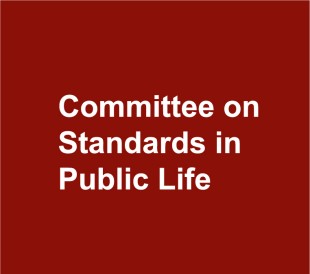When does legitimate scrutiny or robust debate cross the line into intimidation? This has been a central question for the Committee as part of our current review into the intimidation of Parliamentary candidates.
Intimidation of individuals who are standing for public office or who take up a role in public life threatens to undermine the relationship between public office-holders and the public, and damage the vibrancy and diversity of our public life. But any action taken to address intimidation must not quash robust debate or reduce the legitimate scrutiny of public officials.
Many contributors to our review accept that you need a thick skin in public life; it goes with the territory. But our evidence also shows that some of what has been happening in recent years is something very different.
In drawing this line, we need to be clear exactly what it is we’re seeking to address. When does behaviour become intimidation?
To help the Committee answer these questions, we held a roundtable of academics, think tanks, and former Parliamentary candidates - and have just published the transcript on our website.
It became clear from the discussion that it is impossible to distinguish intimidatory behaviour just by its motivation. We heard evidence of a range of different motivations underlying quite similar unacceptable behaviour - from opposition to someone else’s views, attempting to undermine somebody’s political campaign, disaffection with politicians or others in public life, or simply because a candidate is a woman, or transgender, or from a minority ethnic background.
The roundtable also helped make clear that intimidation isn’t the same as abuse. As one participant pointed out, something as simple as saying the name of the road that somebody lives on can actually be more threatening than abusive language.
Intimidation isn’t simply a case of ‘taking debate too far’. Participants at our roundtable observed that persistent abuse, particularly on social media, is actually aimed deliberately at shutting down debate - the online equivalent of shouting someone down so they can’t be heard.
In a similar way, threatening someone with violence is used as a way to silence them - to prevent them from speaking up in public.
So, intimidation is not identical to abuse; it seeks to silence and shut down debate; and it can be intimidatory regardless of whether it is directed towards women in public life or those who hold particular views. The idea of intimidation is that it intentionally uses words or behaviour to block participation in public life.
The line between legitimate debate and scrutiny, and intimidation, is actually very clear. Legitimate scrutiny recognises that public office-holders must be accountable for the decisions they take – and seeks information and explanation rather than silence or withdrawal. Intimidation aims at shutting down debate – cutting off participation and engagement.
Tackling intimidation, far from threatening genuine democratic debate and scrutiny, will actually serve to enhance and protect it.
The Committee will be publishing its report before the end of the year.

1 comment
Comment by Mr R W Ebley posted on
In order that change is effectively undertaken all levels of government and other public funded organisations need to demonstrate good management
I suggest independent management accreditation to achieve this
Thank you